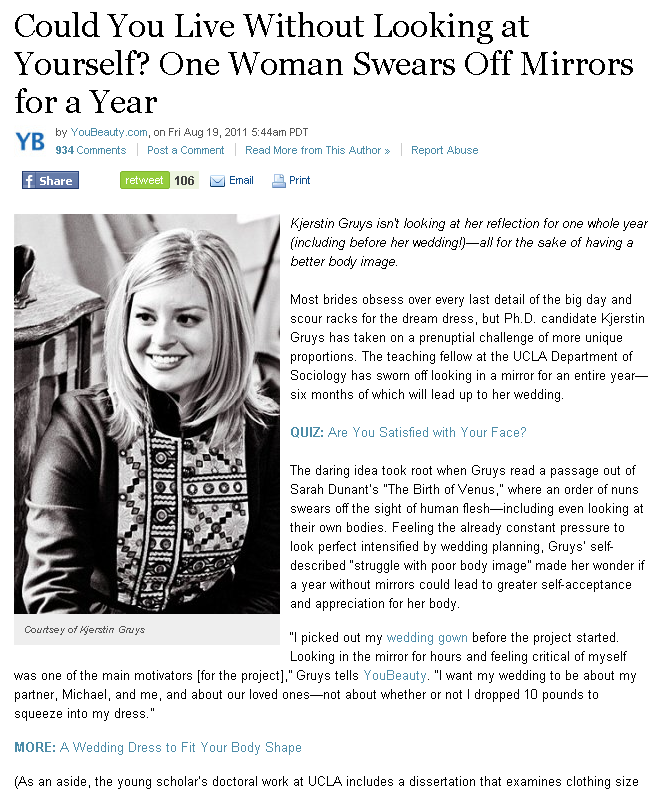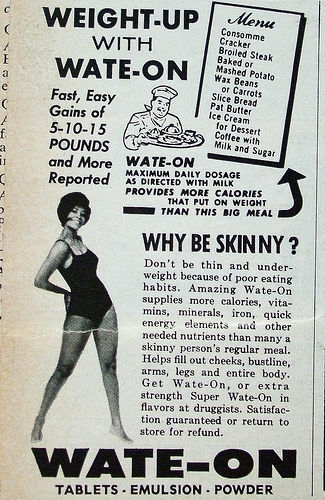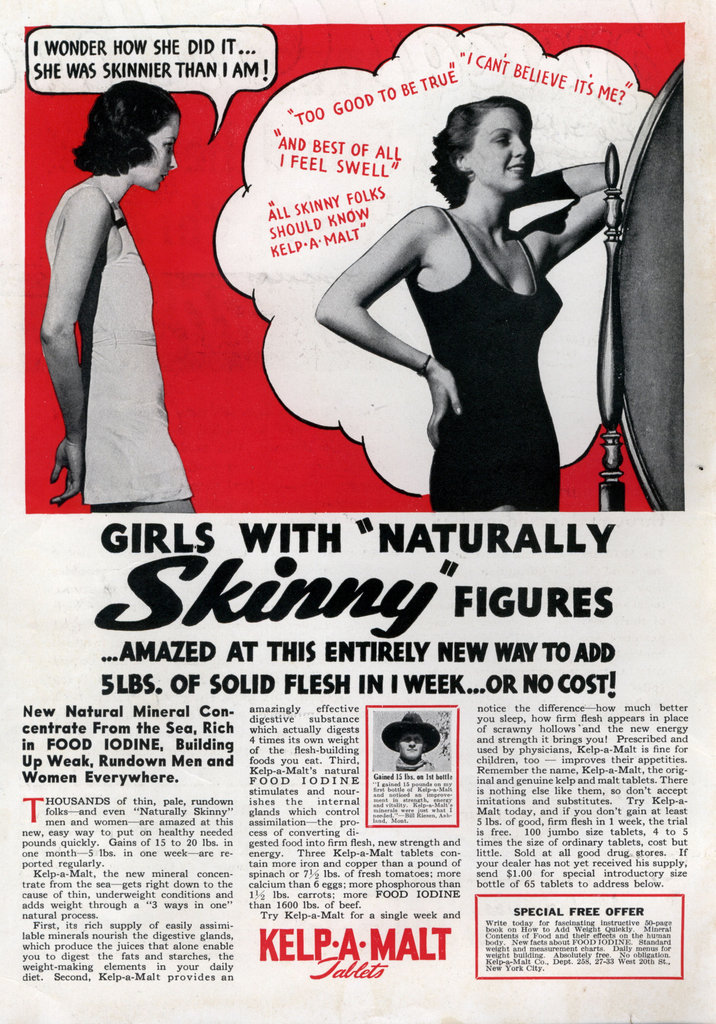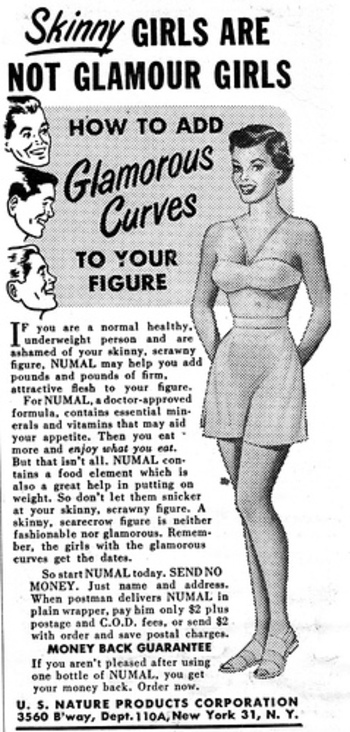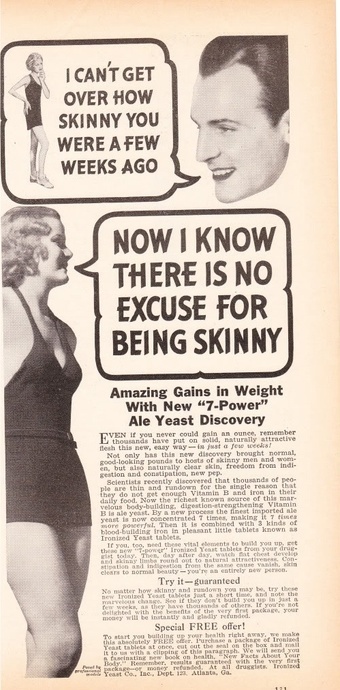Cross-posted at Jezebel.
At least that’s what Skinny Water is promising in their latest advertisement. The ad shows a woman facing a throng of cameramen snapping her picture, elegant earrings dropping to the top of the headline which says: “Skinny Always Gets the Attention.” Take a look:
Below the headline and photo of the various flavors, it also says “Zero calories, Zero sugar, Zero Carbs, Zero Guilt.” With all that’s not in this water, you might wonder what it does offer. The website tells me that depending on the flavor of water, they’ve added vitamins B3, B5, B6, B12, C, A, and E. They’ve also thrown in magnesium, folic acid, calcium and/or potassium.
Despite paltry efforts to market itself as healthy, Skinny Water is instead perpetrating the cultural message that the best — or only — way to ensure that women get attention is by being skinny. This of course positions them well to try to push their product on those women who have been pulled into this lie.
In fact, Skinny Water is doing precisely the opposite of what a health-conscious company and product should be doing. Promoting the idea that those who are skinny deserve attention more than others creates communities that support harmful diet-related behaviors and disordered eating for the goal of a wispy appearance. Not to mention reinforcing the ever-present undercurrent of bias against the overweight — or even normal weight! — it reinforces the idea that women’s size and appearance is the most important thing about them.
In defiance of that, let’s remind ourselves why Skinny Water is wrong. While the website details the added vitamins and dietary minerals of each drink, it’s far better to get your needed supplements through a healthy diet rich in cruciferous and dark and leafy vegetables, fruits, whole grain and lean proteins. Washed down, in fact, by regular old water that keeps you hydrated and helps your body process and absorb nutrients. Skinny Water is telling its buyers that by adding these vitamins and minerals to their product, one can, perhaps, eschew a calorie-free but vitamin-rich manipulated water diet. For example, the “Power,” “Sport” and “Fit” drinks are all fortified with calcium, magnesium, and potassium – to help activate metabolic enzymes, keep your blood regulated, and support strong bones and teeth. Do you know what else can do that? Bananas, yogurt, kale, almonds and cashews, and quinoa.
These are madly marketed products that don’t substitute for a healthy, well-rounded diet. Instead, they capitalize on the now-entrenched notion that women care more about being skinny than anything else.
UPDATE: Jezebel reports that this advertisement has been retired by Skinny Water, thanks to objections from consumers.
——————————
Larkin Callaghan is a doctoral student at Columbia University studying health behavior and education. She is particularly concerned with gender disparities in access to healthcare and prevention services, and has done research on adolescent female sexual health, how social media operate as an educational platform, and differences by gender in the effectiveness of brief health interventions. You can follow her on Twitter, Tumblr, and at her blog.
If you would like to write a post for Sociological Images, please see our Guidelines for Guest Bloggers.









